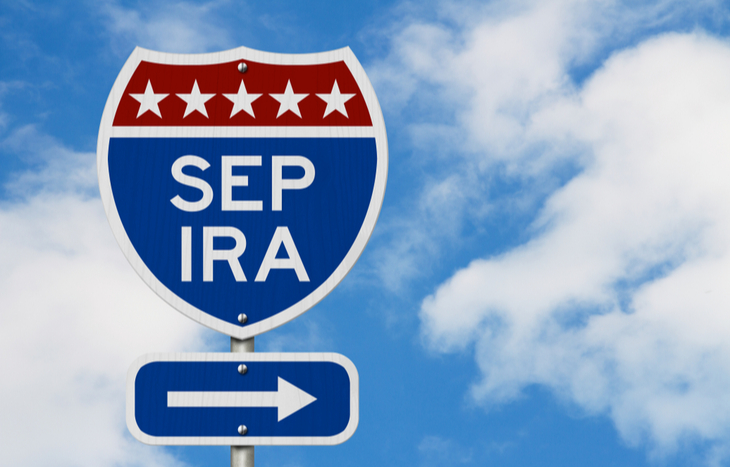SEP IRA – Simplified Employee Pension Plan
How a SEP IRA Works
An individual retirement account (IRA) is a type of tax-advantaged account you can use to save money for your retirement. With a simplified employee pension (SEP) IRA, you can enjoy having an IRA that works for self-employed workers as well as traditional workers. After an employer sets up the account, they can make contributions for all of their eligible employees.
Many people love using SEP IRAs because of how easy they are to set up. At a company like Vanguard, it takes just a few minutes to create an account. Once the appropriate paperwork and identification have been provided, you are able to fund your account and start investing.
You may want to consider this option instead of a traditional IRA because it has higher contribution limits. SEP IRAs are also popular because employers can choose how much they want to contribute. And these IRAs have low administrative costs. Unlike some retirement plans, all of the employer contributions to the SEP IRA will be vested right away.
What Is a SEP IRA?
According to the Internal Revenue Service (IRS), businesses of any size can use SEP IRAs for employees and business owners. This kind of retirement account uses tax-deductible contributions, so each contribution can help you lower your tax bill for the current year.
Once you contribute to your SEP IRA, the money can continue to grow until you retire. You only have to pay taxes on the money that you withdraw. When you eventually get a distribution, the money will be taxed like normal income.
How a SEP IRA Works
Employers generally like SEP IRAs because they are not as expensive to administrate as other plans. In addition, they have fairly low start-up costs. Unlike traditional IRAs, SEP IRAs have high contribution limits for employers.
When a small business offers a SEP IRA, they must offer it to eligible employees. Employees can only use a SEP IRA if they are at least 21 years old. They must work at the company for three years and make $600 a year. If business slows down, the organization does not have to make any contributions that year.
The business owner is not in charge of the plan’s investment choices. An IRA trustee is responsible for picking a list of individual investments. Then, each employee can choose which investments they want to use. Once the business has set up the account, all they have to do is send contributions to the employee’s account. The trustee handles tasks like mailing annual statements, depositing contributions and filing legal documents.
When it comes to taxes, SEP IRAs are treated like traditional IRAs. This means that your SEP IRA uses the same rollover rules. Employers can get a tax deduction for the amount they contribute to the IRA accounts. Likewise, employees can get a tax deduction for the amount they contribute to their accounts as well.
Who Can Get a SEP IRA?
SEP IRAs are typically used by small businesses and self-employed workers. According to the IRS, small businesses are required to contribute the same percentage of the employee’s income to every account. If you give yourself a contribution that is 15 percent of your annual income, you must also give each employee a contribution that is also 15 percent of their annual income. Because of this, many large companies choose other types of retirement plans.
Once SEP IRAs are set up, the employee is in charge of managing their account. They have complete control and can determine whether they want a distribution or a new investment type. To get a contribution, the employee must work for you for three out of the last five years. They also must have earned at least $600 in the previous year. In addition, they must be at least 21 years old.
Pros
- You can contribute up to $58,000 in 2021.
- SEP IRAs allow you to deduct your contribution from your taxes.
- You can use SEP IRAs with a Roth IRA or traditional IRA.
- These accounts are easy to set up.
- Businesses owners do not have to deal with any administrative work after they set up the account.
Cons
- You cannot get tax-free distributions like you can with Roth IRAs.
- Unlike other plans, you cannot use catch-up contributions when you turn 50 years old.
- You must get a minimum distribution when you turn 72 years old.
- All employees must get a proportional contribution that is the same.
- If you take a distribution before you turn 59.5, you will have to pay a penalty of 10 percent as well as income taxes on the distribution.
What Are the Contribution Limits?
Normally, a traditional IRA allows you to save $6,000 a year. With a SEP IRA, you can potentially contribute $58,000 in 2021. Your contribution cannot be more than 25 percent of your annual compensation. If you are a business owner, you are also limited to contributing a maximum of 25 percent of each eligible employee’s income.
If you have a SEP IRA, the employer contributions do not reduce the amount that you can contribute to your IRA. With a traditional IRA, your tax deductions may be limited if you also have a SEP IRA. For more information about deduction limits for traditional and SEP IRAs, you should talk to your financial advisor.
How Do I Contribute to My SEP IRA?
Contributing to a SEP IRA is fairly straightforward. After you have opened an account, you can look through the investment options your provider offers. This selection will often include a range of options like bonds, stocks and mutual funds. You should choose investments based on your personal risk tolerance and age. In addition, you should consider the age you plan on retiring at. In general, people can tolerate having riskier investments if their retirement date is decades away.
How Do I Get Started?
To start, you can go online to find an account provider. Then, you will need to sign documents with your provider. Afterward, you must give all of your eligible employees information about the SEP IRA. This information can be from your provider or IRS Form 5305-SEP. Each eligible employee must have a SEP IRA account set up with your provider. After your accounts are set up, all you have to do is fund them and remember to deduct your contributions each year.
Preparing for retirement? Consider signing up for our free Wealthy Retirement e-letter today! Simply enter your email into the subscription box below.






